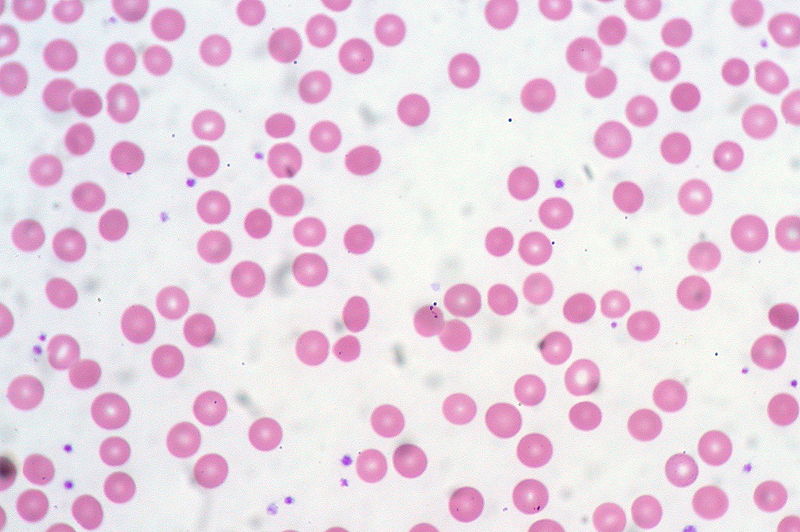Playlist
Show Playlist
Hide Playlist
Anemia: Definition
-
Slides Anemia Overview.pdf
-
Reference List Pathology.pdf
-
Download Lecture Overview
00:01 Our broad topic of anemia begins here with laying down the foundation. 00:06 A lot to discuss, but we’ll take it step by step. 00:11 First, anemia, who’s your patient? Feeling fatigue and tired. 00:16 Why is that? Well, for the most part, it’s because of decreased hemoglobin. 00:20 That should be your focus here in the first bullet point. 00:23 Hemoglobin by definition when decreased automatically puts you in the realm of anemia. 00:28 Along with this, oftentimes, you will find decrease in total number of RBCs even though there is not a guarantee and circulating RBC mass is usually decreased as well. 00:40 Once again, by definition, anemia means decreased hemoglobin, which then means to you that you’re not able to properly then deliver oxygen to your tissues, which are now starving and hungry, and so therefore, tired. 00:53 In addition, oftentimes, with hemoglobin you’ll find that the hematocrit will be decreased as well. 00:58 Hematocrit, you want to think of approximately being 40% and if you find something much below 33 and such, you know your patient is in the realm of anemia most likely. 01:11 Next, now as we go through the synthesis or the development of an RBC, it’s important that keep a few things in mind conceptually. 01:22 And if you think about an RBC being generated, it begins in the bone marrow as you should now. 01:28 And if you begin in the bone marrow, you should be thinking about the hematopoiesis or specifically under hematopoiesis, it would be erythropoiesis, wouldn’t it? So in your head, you’re thinking about what lineage, if your thinking about the bone marrow for RBCs? The lineage here would be in fact your myeloid, wouldn’t it? So at some point, when we go on to talk about more of your RBC pathology, we’ll talk about more about these myeloid issues. 01:52 I hope that’s clear. 01:54 All cells from your hematopoietic stem cell that are dealing with myeloid, well, for the most part, it will be all cells. 02:01 What are they? RBCs, you also have your platelets, but those are different types of signalling pathways. 02:08 And then you have your granulocytes and by that we mean, of course, our neutrophils and eosinophils and basophils. 02:15 And that’s about it really in general, and of course, macrophages as well, but then you get into your non-myeloid and that will be your lymphocytes. 02:24 I hope that’s clear. 02:25 That’s the picture that I’d like for you to have in your head prior to moving forward here. 02:30 Anemias, we’ll classify this, and we will simply classify this, but I’m then going to put in more details for you, not to worry. 02:38 And we’ll begin our discussion at some point with microcytic anemia. 02:42 And what that basically means is the parameter that you’re going to use here is called MCV, which stands for mean corpuscular volume Once again, MCV stands for mean corpuscular volume and that is what you should be looking for in interpretation of your labs when you get them and you find that your MCV is less than 80. 03:00 But before we go there, understand what normal is, normal is between 80 to 99. 03:06 Again, I am being specific there and the reason for that is because once you start getting above 100, obviously that’s going to put you in the category of macrocytic, okay? So I am going to be a little bit more technical. 03:18 But, you know, for the most part, as far as your hematology is concerned, if you follow less than 80, you’ll be fine, that’s microcytic. 03:25 If it’s between 80 to 100, it will be called normocytic. 03:30 And then if it’s greater than 100, then you’re thinking about macrocytic, okay? And that’s the classification, that’s the lab that you want to pay attention to. 03:38 As we move through some of these specific anemias, then I’m going to add in more of our parameters including red blood cell distribution width and I also put in here mean corpuscular hemoglobin concentration, and of course, the RBC count and such.
About the Lecture
The lecture Anemia: Definition by Carlo Raj, MD is from the course Introduction to Red Blood Cell Disorders.
Included Quiz Questions
Which of the following is NOT a definition of anemia?
- Reduced red blood cell affinity for oxygen
- Reduced red blood cell mass
- Reduced hemoglobin concentration
- Reduced hematocrit concentration
- Reduced absolute number of circulating red blood cells
Which of the following values for mean corpuscular volume (fL) is normal?
- 80–100
- 60–80
- 95–105
- 60–70
- 100–120
Customer reviews
5,0 of 5 stars
| 5 Stars |
|
1 |
| 4 Stars |
|
0 |
| 3 Stars |
|
0 |
| 2 Stars |
|
0 |
| 1 Star |
|
0 |
Super good this app lovely to use this surely helps become better dr.




